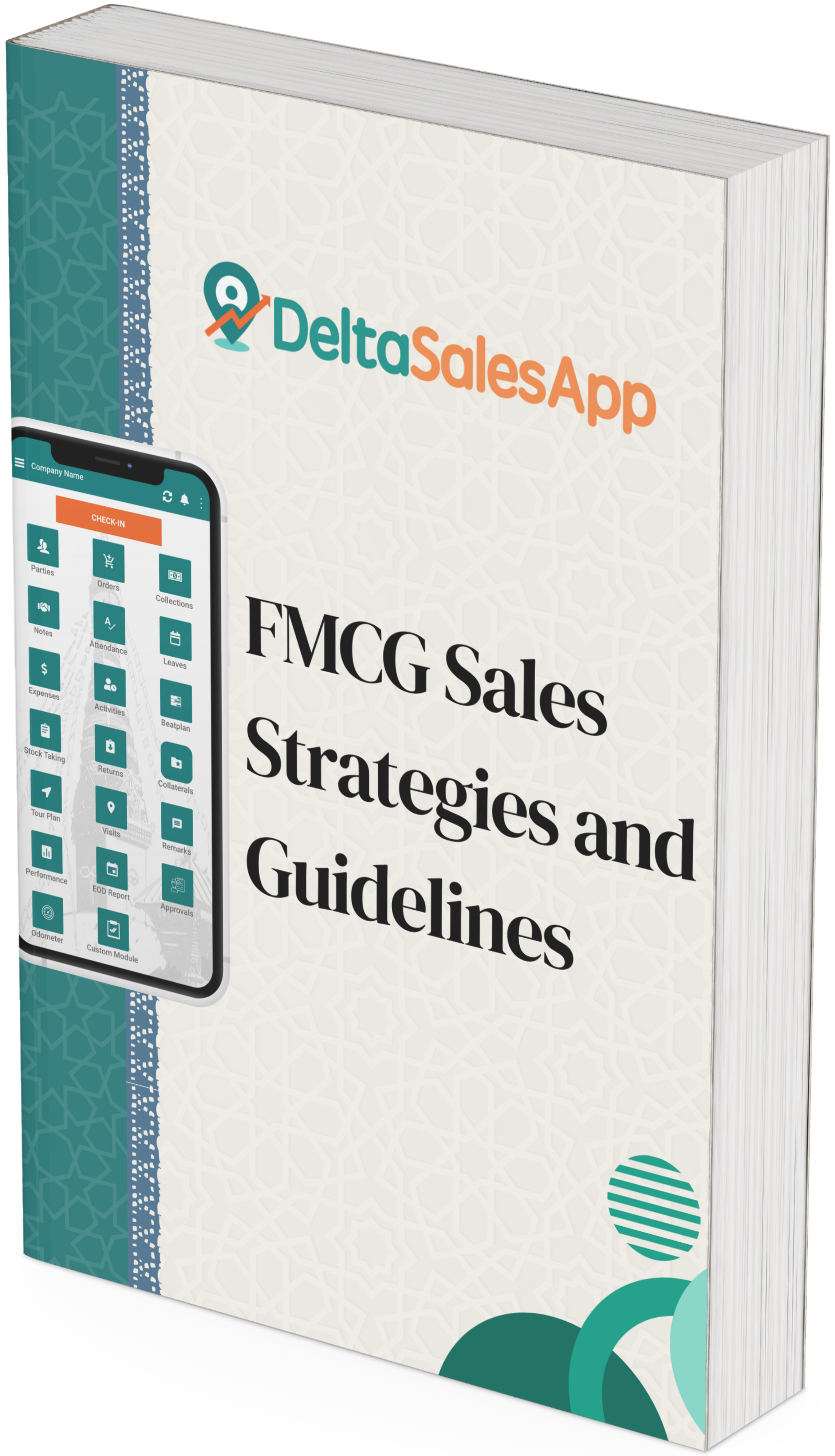Sales Territory Management: A 5-Step Plan for Field Success
_(13)_1744979046.png)
In today’s fast-moving retail environment, sales teams are under pressure to do more with less—more coverage, more accuracy, more impact—with fewer resources and tighter timelines. That’s where smart territory management comes in.
A well-designed territory plan ensures that your field reps are visiting the right stores at the right time, without wasting effort on duplicate visits or missing key accounts. It brings structure to your sales strategy, reduces inefficiencies, and drives consistent retail execution.
Modern tools like Sales Force Automation (SFA) have made this process faster and more accurate, helping teams gather field data, optimize schedules, and manage performance in real time.
When these elements work together, territory planning becomes more than just logistics—it becomes a competitive advantage.
Let’s break it down into five practical, high-impact steps.
Step 1: Segment Your Customers Effectively
Effective territory planning starts with knowing your customers—not just who they are, but how they behave and what they need.
Segmenting customers helps you organize the field more logically and assign reps more strategically. You can segment by:
Geography – helps reduce travel time
Store demographics – like size, format, or chain vs. independent
Purchase behavior – frequency, value, or responsiveness to promotions
Strategic importance – growth potential or brand alignment
With SFA platforms, segmentation becomes a data-driven process. Instead of making assumptions, you can use real visit history, order volume, and promotion engagement to categorize accounts and prioritize the ones that need more attention.
Step 2: Set Territory Goals Based on Opportunity
Once your customers are segmented, each territory needs a purpose—specific objectives that align with both the rep’s role and the company’s broader sales strategy.
Territory goals could include:
Retaining and growing key accounts
Increasing coverage in under-visited areas
Reducing stock outs in high-volume stores
Improving shelf visibility and display execution
Expanding into new neighborhoods or trade channels
Reps are more likely to succeed when their goals are relevant to their region. If your business uses Distribution Management Software, you can tie those goals to delivery performance and secondary sales data—ensuring that what’s planned aligns with what’s actually happening in the market.
Step 3: Build Visit Schedules That Make Sense on the Ground
Great territory plans fail when reps don’t have realistic, efficient schedules. Visit planning is just as critical as goal setting.
To optimize schedules, consider:
How long each visit typically takes
How close store locations are to one another
Which stores need weekly visits vs. monthly check-ins
Time-of-day preferences or delivery windows for each account
Sales Force Automation systems are especially useful here, offering route optimization and calendar planning tools. These not only reduce drive time but ensure that reps are spending their day in the field—not stuck in traffic or bouncing between far-apart locations.
Step 4: Assign Territories Based on People, Not Just Places
Good coverage isn’t just about drawing zones on a map. It’s about putting the right rep in the right place.
When assigning territories, look at:
Existing relationships with store managers or distributors
Past performance in similar environments
Comfort level with territory type (urban vs. rural, dense vs. sparse)
Strengths—like building new accounts or deepening long-term ones
Avoiding territory overlap is key—it prevents confusion and builds accountability. By using historical data from tools like Distribution Management Software, managers can match reps to areas where they’re most likely to succeed, based on past trends and partner activity.
Step 5: Monitor and Adjust—Territories Aren’t Static
Even the best plan needs to adapt. Store closures, seasonal shifts, and team changes all impact the effectiveness of your territories.
Track performance across the following metrics:
Visit frequency vs. plan
Sales volume by territory
On-shelf availability and planogram compliance
Customer feedback and engagement
Missed visits or under-serviced accounts
Sales Force Automation allows real-time tracking, enabling managers to catch issues early—whether it's a rep missing visits or a store with declining sales. Combining this with stock movement insights from your Distribution Management Software gives you a full picture of both the customer experience and the backend supply chain.
Final Thoughts: Make Every Visit Count
Sales territory management is more than just planning—it’s the foundation for scalable, efficient growth in retail execution. A strong territory strategy improves customer service, increases sales coverage, and helps your team work smarter, not harder.
With the right approach—and the right tools like Sales Force Automation in the field and Distribution Management Software behind the scenes—you can turn every rep into a high-performer and every territory into a growth engine.
Start refining your sales territory plan today, and make every visit count.
Looking to take your sales strategy even further? Don’t miss our blog: Enhancing Sales Strategy With Field Sales Automation Insights
👉Read more here
Explore how Field Sales Automation tools can deliver powerful data-driven insights to help you optimize territories, improve rep performance, and build stronger customer relationships.
🔍 FAQs
1. What is sales territory management?
Sales territory management is the process of strategically assigning geographic or account-based regions to field sales reps. It ensures that the right stores or customers are visited at the right time, improving sales coverage, reducing overlap, and enhancing in-store execution.
2. Why is territory planning important in retail sales?
Territory planning helps sales teams operate more efficiently by minimizing travel time, prioritizing key accounts, and aligning rep activities with business goals. It’s essential for maintaining strong store relationships, reducing stockouts, and maximizing ROI from field visits.
3. How does Sales Force Automation (SFA) support territory management?
Sales Force Automation (SFA) tools streamline territory planning by offering features like route optimization, real-time field reporting, visit tracking, and performance analytics. These tools help ensure reps stick to schedules, capture in-store data accurately, and make every visit more productive.
4. What is Distribution Management Software (DMS), and how does it fit in?
Distribution Management Software (DMS) provides visibility into backend operations like order fulfillment, inventory levels, and distributor performance. When combined with field execution data from SFA tools, DMS helps align retail efforts with product availability—ensuring promotions and visits translate into sales.
5. How do I segment customers effectively for territory planning?
Segment customers based on factors like:
- Geography (to reduce travel)
- Store type (chain vs. independent)
- Order frequency or purchase volume
- Strategic value (growth potential, alignment with brand goals)
Using SFA platforms allows you to base these decisions on actual sales and visit data—not just assumptions.
6. What should I include when setting goals for each territory?
Territory goals might include:
- Growing key accounts
- Improving shelf visibility
- Reducing out-of-stocks
- Expanding into new neighborhoods
- Increasing visit frequency or rep productivity
Territory-specific goals ensure that field reps stay focused on relevant KPIs.
7. How often should I update or adjust my territories?
Territories should be reviewed regularly—at least quarterly—and adjusted as needed based on:
- Store openings or closures
- Seasonal trends
- Team changes
- Sales performance shifts
Real-time tracking with SFA tools and backend data from your DMS makes it easy to stay agile.









